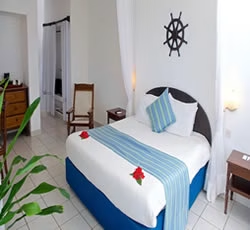Exploring Major Differences & Similarities Between the Samburu and Maasai People
The Samburu and Maasai are two distinct ethnic groups in Kenya, each with unique cultures, traditions, and lifestyles. While both the Samburu and Maasai share similarities as pastoralist communities in Kenya, their differences in location, language, social structure, cultural practices, livelihood, population & demographcs, and interaction with modernity make each of them unique. Understanding these distinctions is essential for appreciating their rich heritage and contributions to Kenya's cultural diversity.
1. Location
Samburu
Primarily inhabit the Samburu County in northern Kenya. The most populated areas are those near the Ewaso Ng'iro River. There is no significant presence of Samburu people outside Kenya.
Maasai
Reside in southern Kenya being spread over the regions of Kajiado and Narok counties.About 60% of Maasai in the world live in Kenya with the remaining 40% residing and thriving in northern Tanzania.
2. Language
Samburu
Speak the Samburu language, which is a dialect of the Nilotic languages.
Maasai
Speak the Maasai language (or Maa), also a Nilotic language but distinct from Samburu.
3. Social Structure
Samburu
Have a more egalitarian society. Leadership roles can vary and are often less rigidly defined.
Maasai
Have a more hierarchical structure with defined roles based on age and gender. Leaders known as elders play significant roles in decision-making.
4. Cultural Practices
Samburu
Known for their vibrant beadwork and distinctive colorful attire. Engage in unique rituals, such as the “Eunoto” ceremony for warriors.
Maasai
Famous for their shuka (a type of cloth) and elaborate bead jewelry. Have prominent rituals like “Enkipaata” for boys transitioning to warriors.
5. Livelihood
Samburu
Primarily pastoralists, raising cattle, goats, and camels. Sometimes engage in agriculture due to environmental factors.
Maasai
Mainly cattle herders, with cattle being central to their culture and economy. Less involved in agriculture compared to the Samburu.
6. Interaction with Modernity
Samburu
More open to integrating modern practices while maintaining traditions. Some communities actively participate in tourism and conservation efforts.
Maasai
More resistant to changes in traditional lifestyles. Tourism is a significant aspect, with many Maasai communities benefiting from cultural tourism.
7. Population & Demographics
Samburu
Currently estimated at 350,000 in Kenya
Age Distribution
Youth (0-14 years): Approximately 40%
Working Age (15-64 years): Approximately 57%
Elderly (65 years and over): Approximately 3%
Gender Ratio
Males: Approximately 49%
Females: Approximately 51%
Maasai
Currently estimated at 1.45 million in Kenya, and 550,000 in Northern Tanzania
Age Distribution
Youth (0-14 years): Approximately 40%
Working Age (15-64 years): Approximately 55%
Elderly (65 years and over): Approximately 5%
Gender Ratio
Males: Approximately 50%
Females: Approximately 50%







